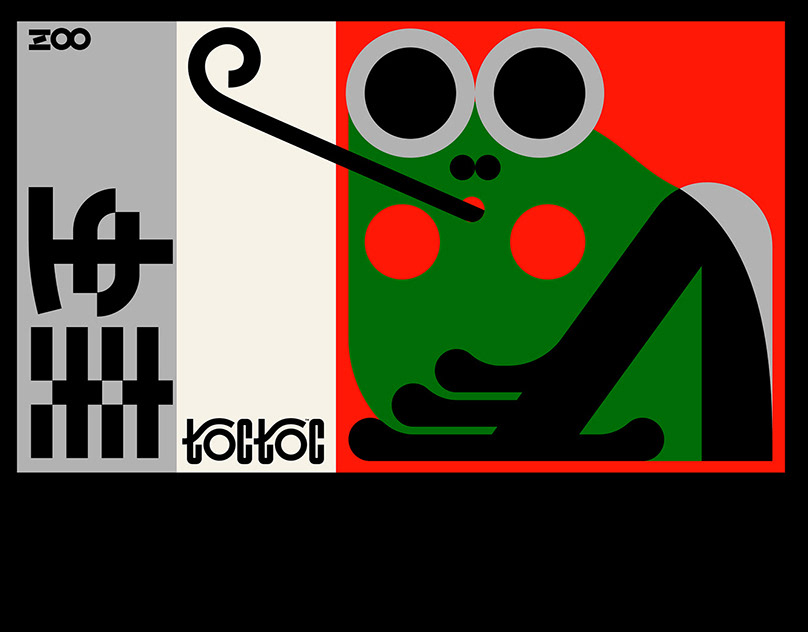The 2013 art theme of "Cargo Cult" seemed like a perfect fit for Eridu Society. One could argue that an advanced culture interacting with a primitive people is exactly what happened in ancient Sumer (Eridu Society takes its name from the first Sumerian city, Eridu). Within an incredibly short span of time, inventions such as written language, the wheel, accounting, the brewing of beer, farming and agriculture, and building temples all started to happen. After the Anunnaki left, great innovation stopped and the Sumerian empire faded into history.
Playing on history, the "Cargo Cult" theme, and Eridu Society's fondness for time travel and exploration, I came up with the idea of Ziggurati. Believing that the Anunnaki would be returning to the Black Rock Desert, we would build a ziggurat - and like any modern people, that would include a museum and visitor's center. In the wall displays and curio carts (which harken back to the roots of modern museums), we would display treasures, artifacts, and curiosities that we'd collected on our adventures through time, space, and several of the better dimensions.
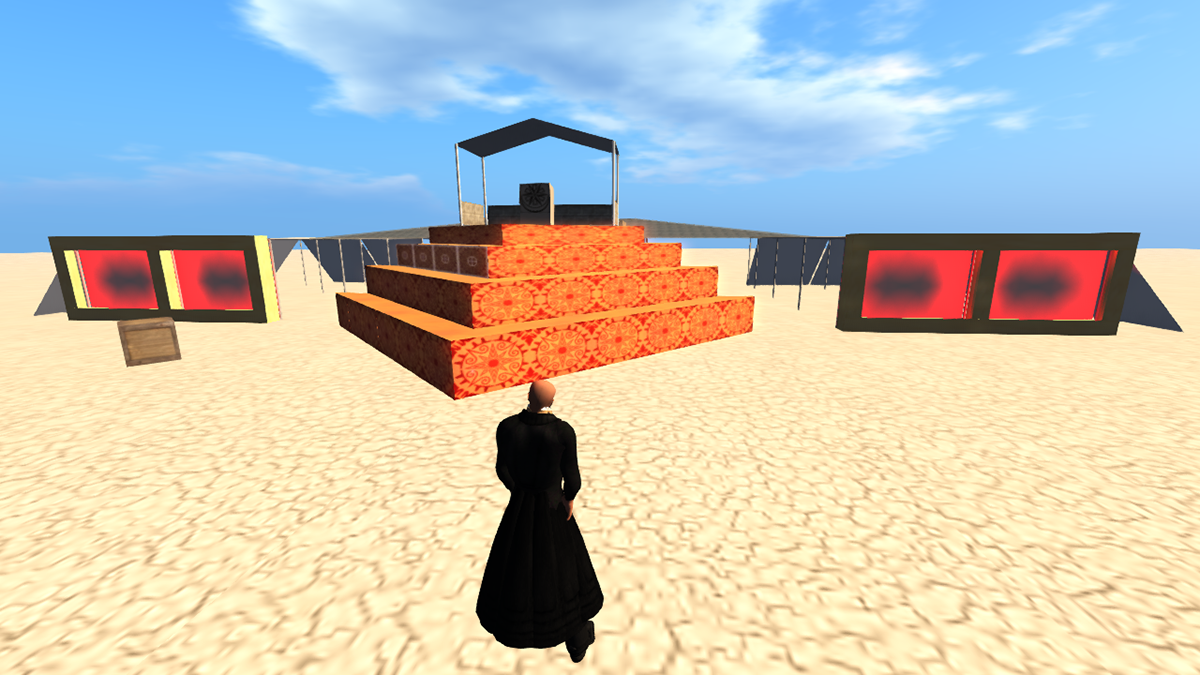
Once things had progressed from the bar napkin, doodle, and Adobe Ideas stage, I toyed around with a rough model in Second Life.
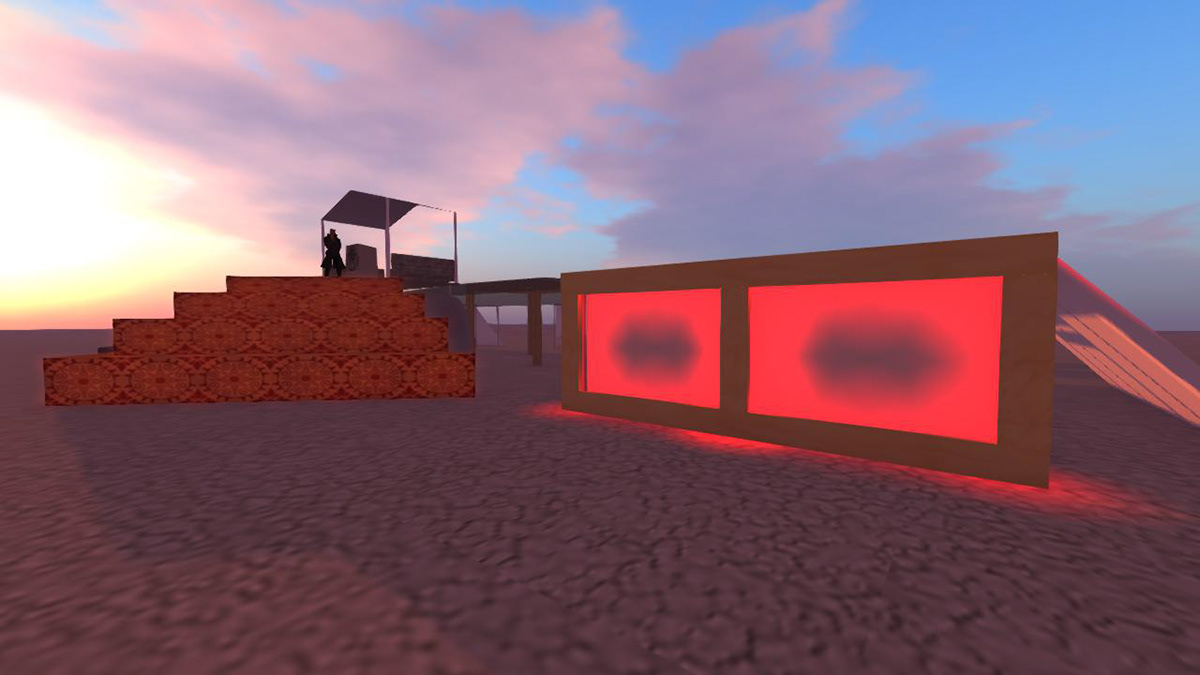
SL gave me the opportunity to quickly mock up ideas, and then 'walk around' within the space and get a better feel for the project.
I also tried my hand at using Autodesk's 123D Design app. While it was a lot of fun to work with, it ultimately did not prove to be an integral part of the workflow.
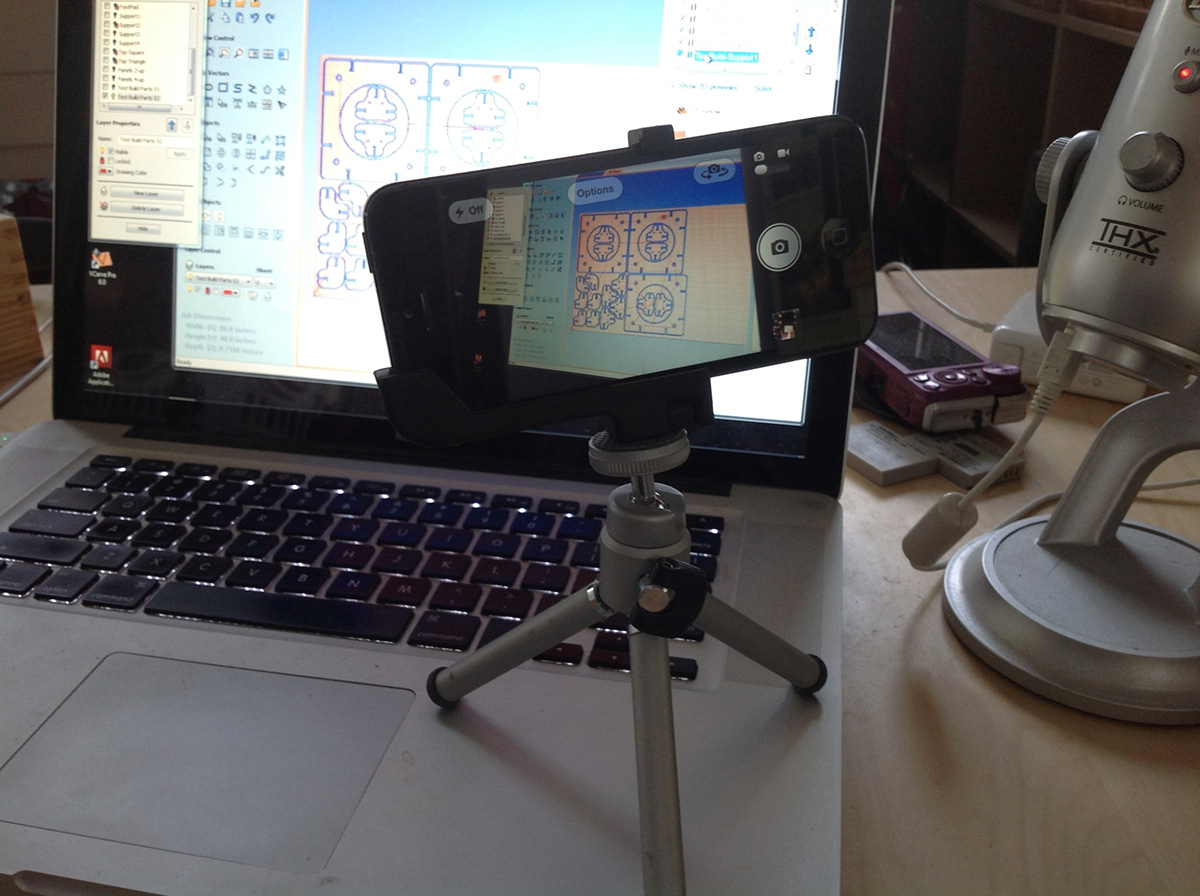
Once I had an idea of what I wanted to build, I started thinking about how I wanted to build it. Inspired by the 2011 Otic Oasis and 2012 Pistil installations by Gregg Fleishmann, Lightning, and Syn, I set out to build my own slotted wood creation. It quickly became "an ancient structure from the distant future." A ziggurat is one of the oldest types of man-made structure, yet I was building it using state of the art tools and technology.
To design the parts, I started in VCarve Pro. This application let me create parts accurate to within 1/1000 of an inch and export files in either formats for CNC machines, or Adobe Illustrator, which could then be used in Cinema 4D.
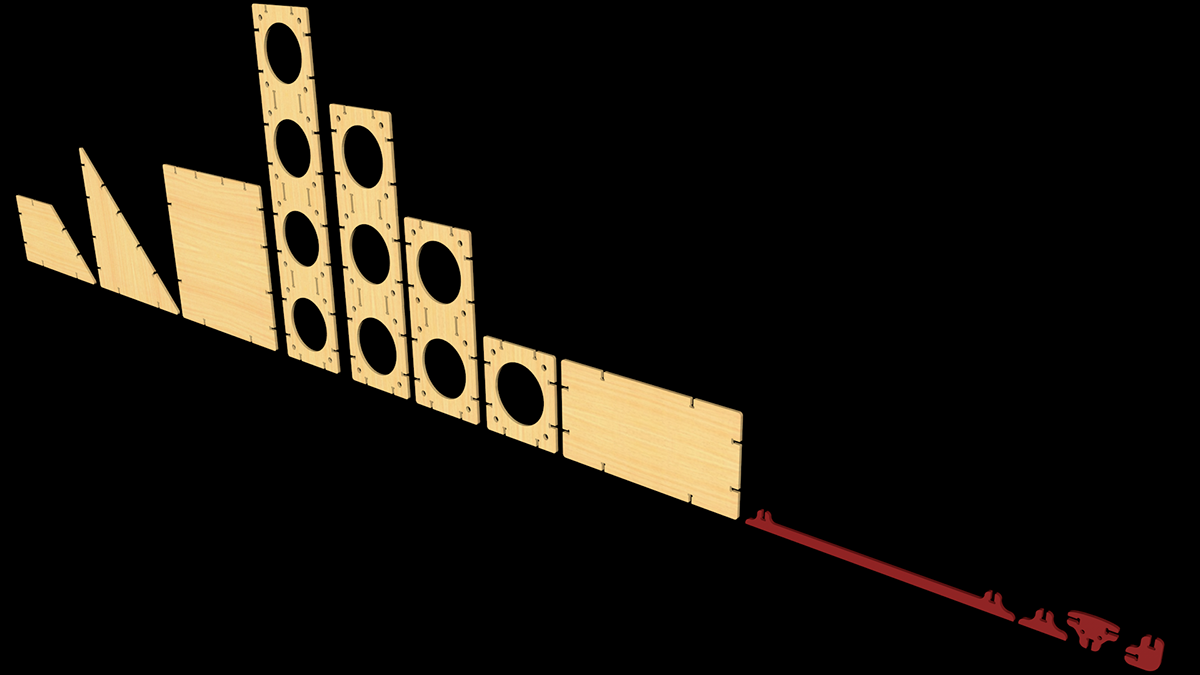
Once the parts files had been cleaned up in Adobe Illustrator, they were brought into C4D for pre-visualization. I wanted it to be a modular design, using as few unique parts as possible.

In order for the design to work, every single piece had to fit perfectly. If the math was wrong in just one place, it wouldn't fit together and a number of parts would need to be redesigned. After the shot above was snapped, it was back to the drawing board yet again.
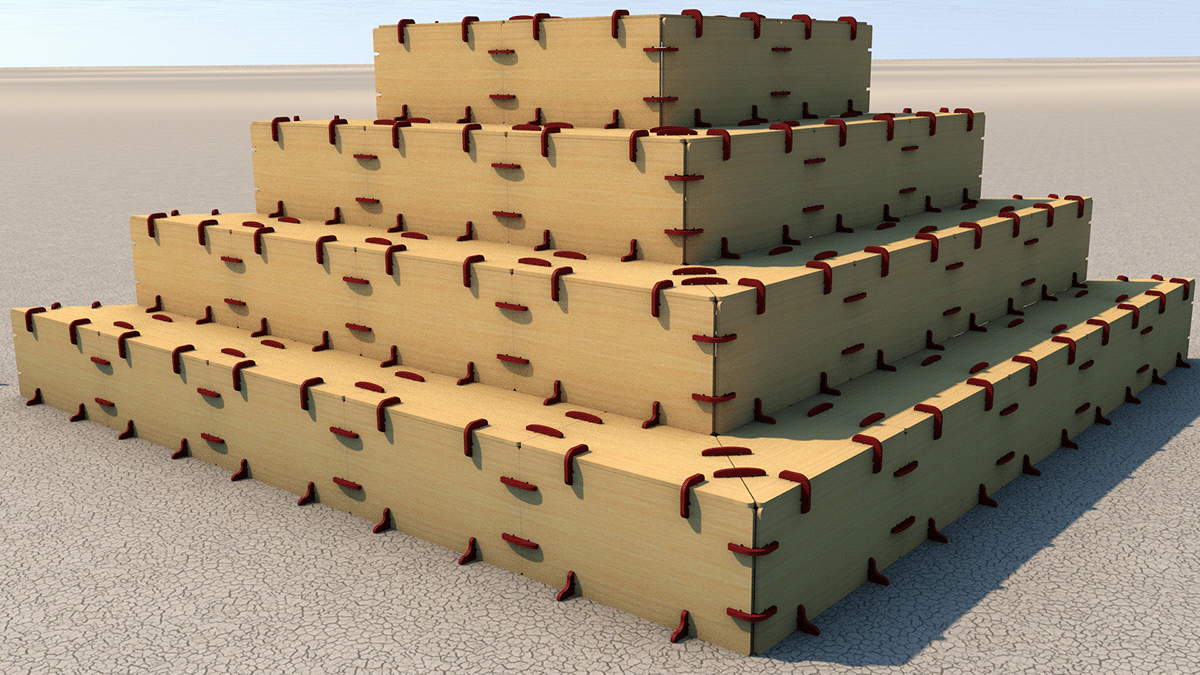
After a few more revisions, all the pieces fit together.
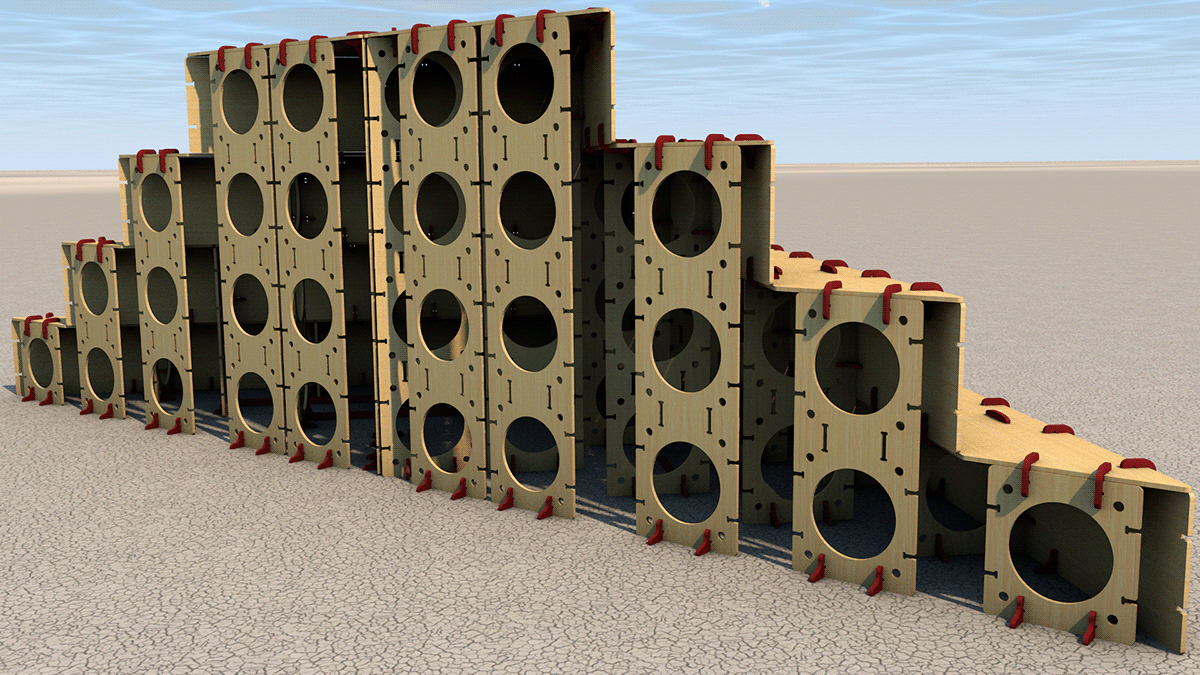
A view from the back shows all the support pieces.

Once all the pieces fit in software, it was time to move onto the next step, and build a scale model. For the ziggurat model, the pieces were all cut out of thin sheets of luan using an Epilog Helix 60-watt laser cutter.
Once all the parts were cut, it was time to figure out how they'd all fit together, and if it would be feasible.
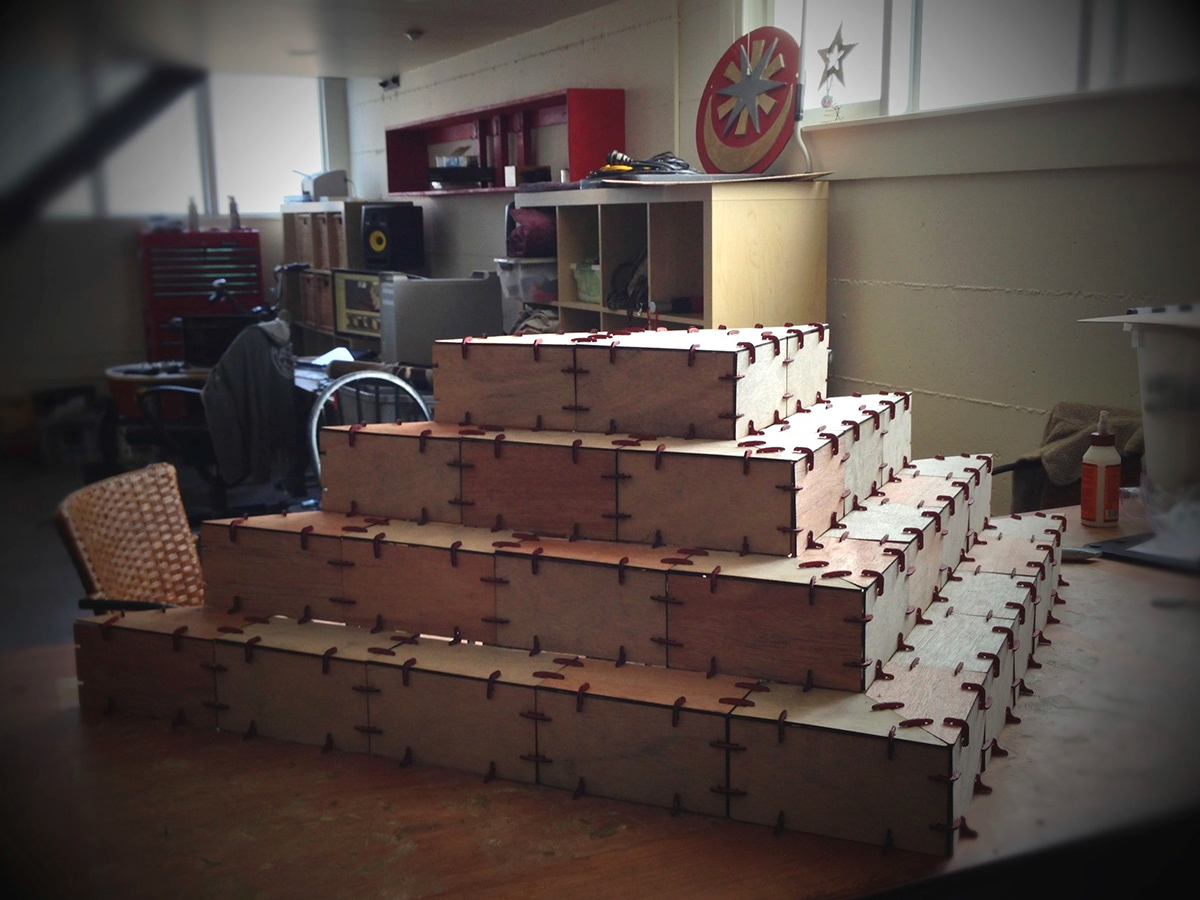
Once the model was built, I had a few ideas for additional revisions. More importantly, I had a good idea on how the full-sized model would be built on site, and I knew it could be built by our crew in the time we had.

Next I did another test build. This time, I built enough full sized parts to make a small section using cheap lumber.
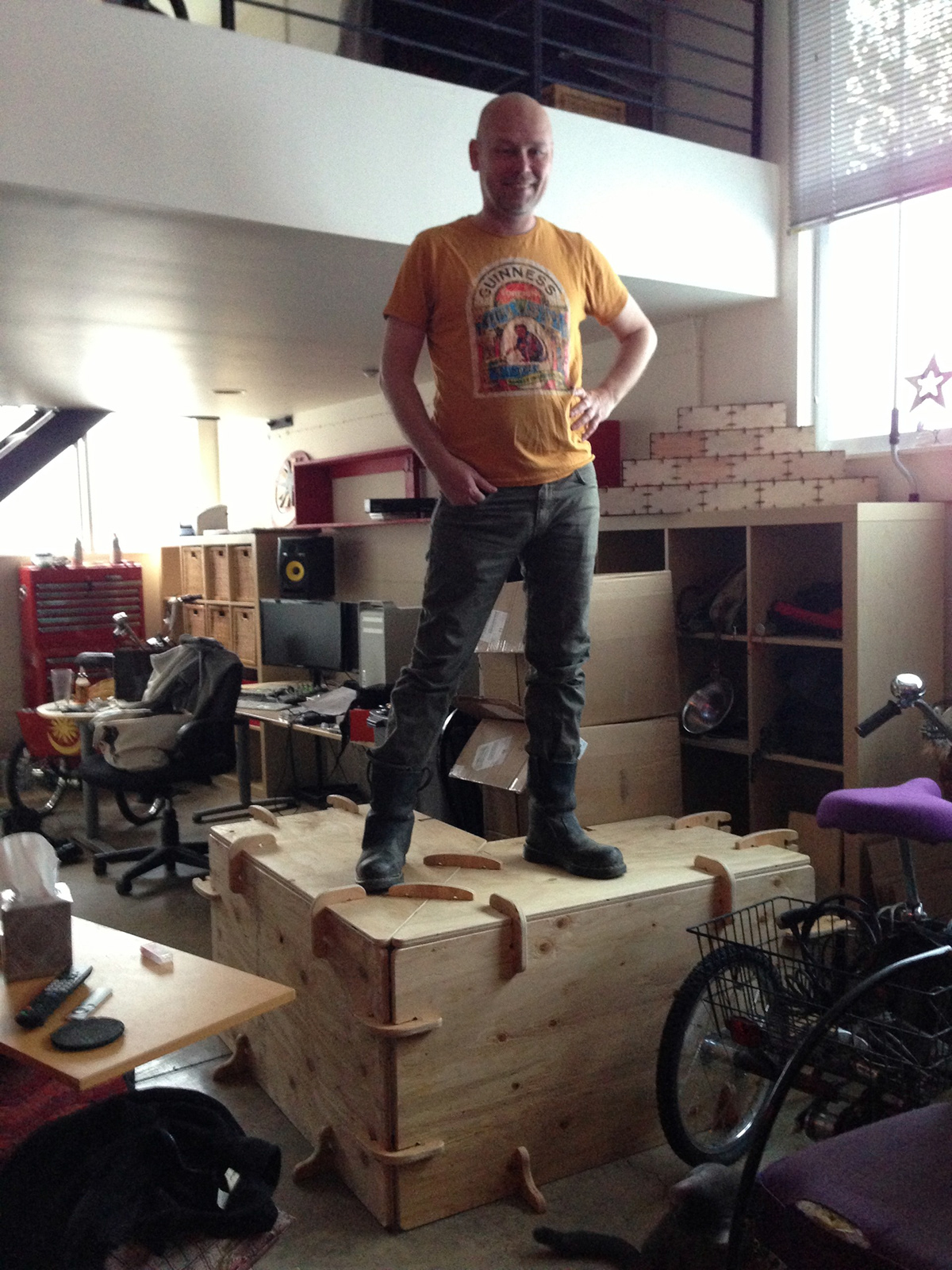
This gave me an even better sense of the look and feel, as well as confirmed my build plan and provided a chance to test the structural integrity of the design. The ziggurat needed to not only look pretty, but be climbable as well.
In the early stages of the design I had used red connectors for contrast, but as the model progressed I fell in love with the color scheme, which gave the installation a sort of 'tinkertoy' feel. After running a few different color and coating tests on scrap wood (like the one pictured above), I opted to stick with the bold color for the connectors.
Every single one of the 700+ parts was cut using the ShopBot CNC router, and then the edges were softened up by either a tabletop or hand-held router. From there, parts were painted as necessary and given several layers of clear-coat to protect them from the elements.

As the physical parts were being cut, the 3D model was being refined and additional design details were being fleshed out. I wanted the face panels of the ziggurat to have additional designs at the edges. This would provide both some additional detail, as well as an opportunity for color accents.
To create the design, I translated a number of different sayings and phrases into cuneiform (which took me a lot more time than I expected).
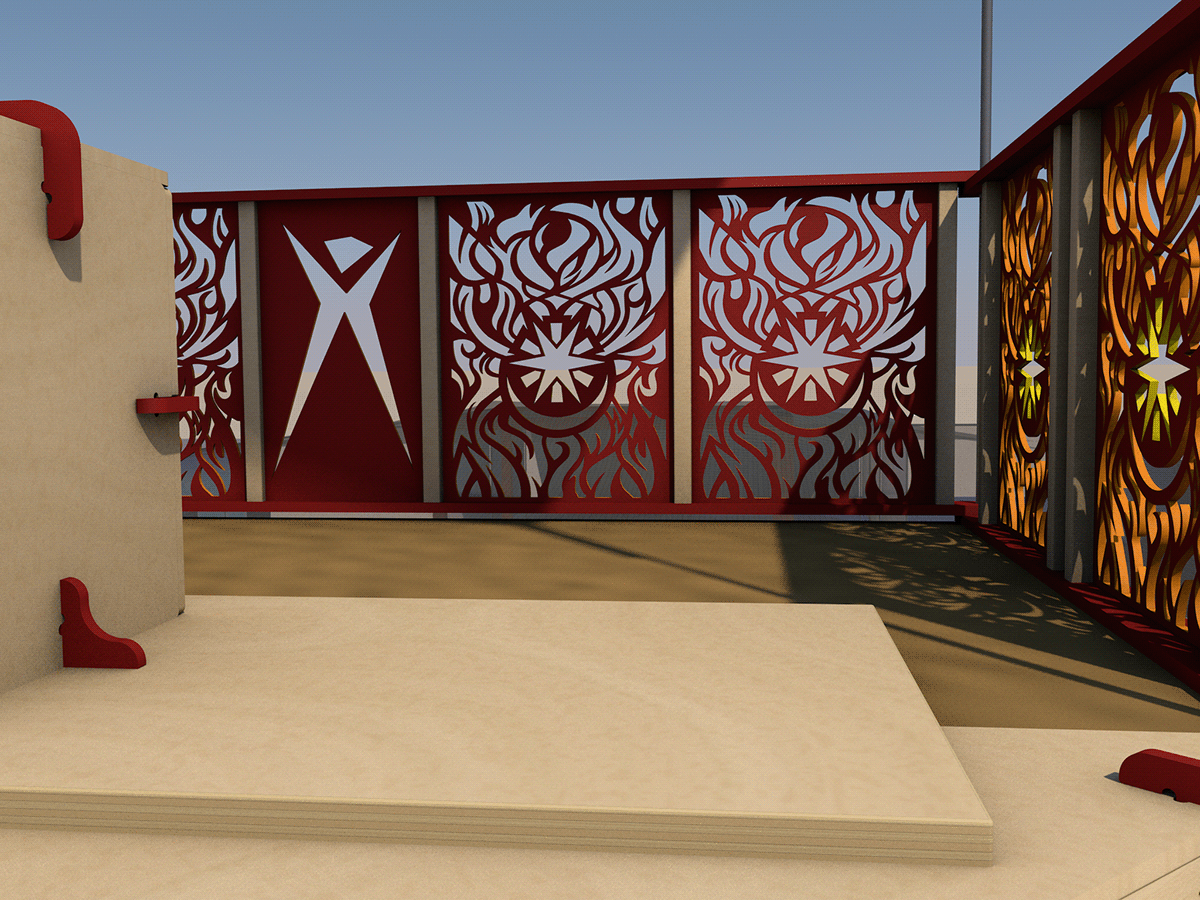
The ziggurat railing panels were another fun design element. A year before, Pani Page had worked on a really incredible iPhone case project that never came to fruition. I loved the design, and so I re-created a version of it that I could use for the railings on the top of the ziggurat. As the image above shows, the edges were painted in a fluorescent orange and fluorescent yellow, which looked positively electric when exposed to UV lighting at night.
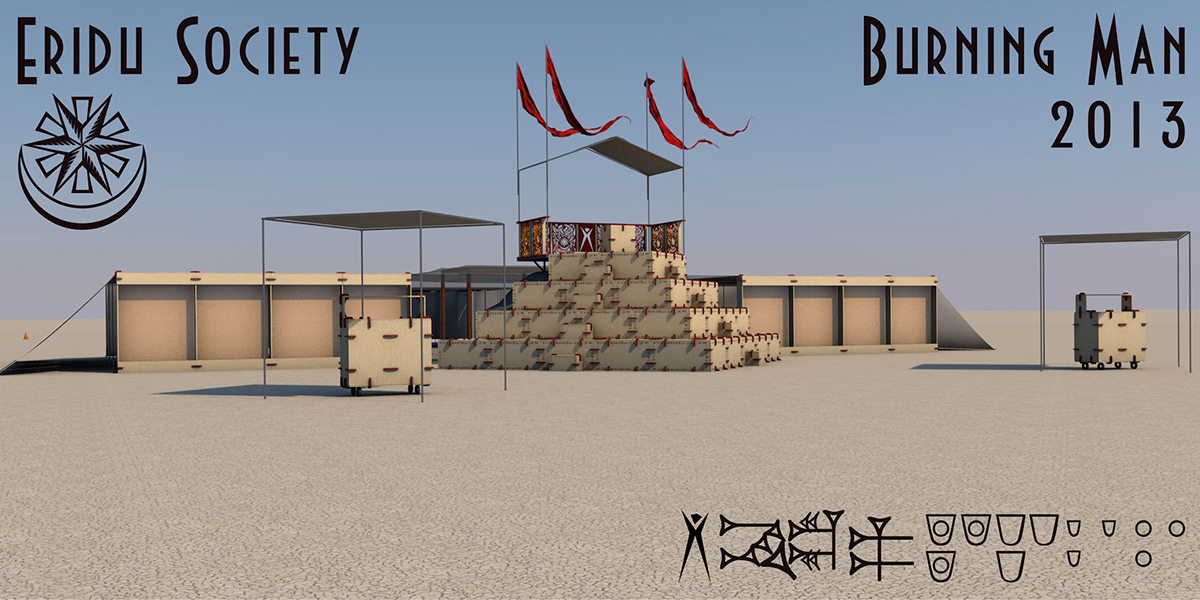
Here's the finished 3D model of the camp's frontage, showing the ziggurat, altar, wall display units, and the two curio carts. The eight wall displays would also get a red fabric backing and have individual art installations mounted into each. Smaller hand-held piece of art would be displayed on the curio carts, and they would also be used for food and drink service throughout the course of the event.
We ran a small (and successful) fundraiser campaign to help cover some of the project's spiraling costs. I put the video above together in Premiere Pro to post on the fundraiser's page, and give supporters an idea of what the project was about.
During the course of the fundraising campaign, I put together another video to show how the project was being designed and built.
Near the end of the fundraising campaign, I produced another video to show the project's process and to help drum up additional support.
In the final run-up to the event, I put together this quick teaser video to help build excitement, as well as share our location in Black Rock City.
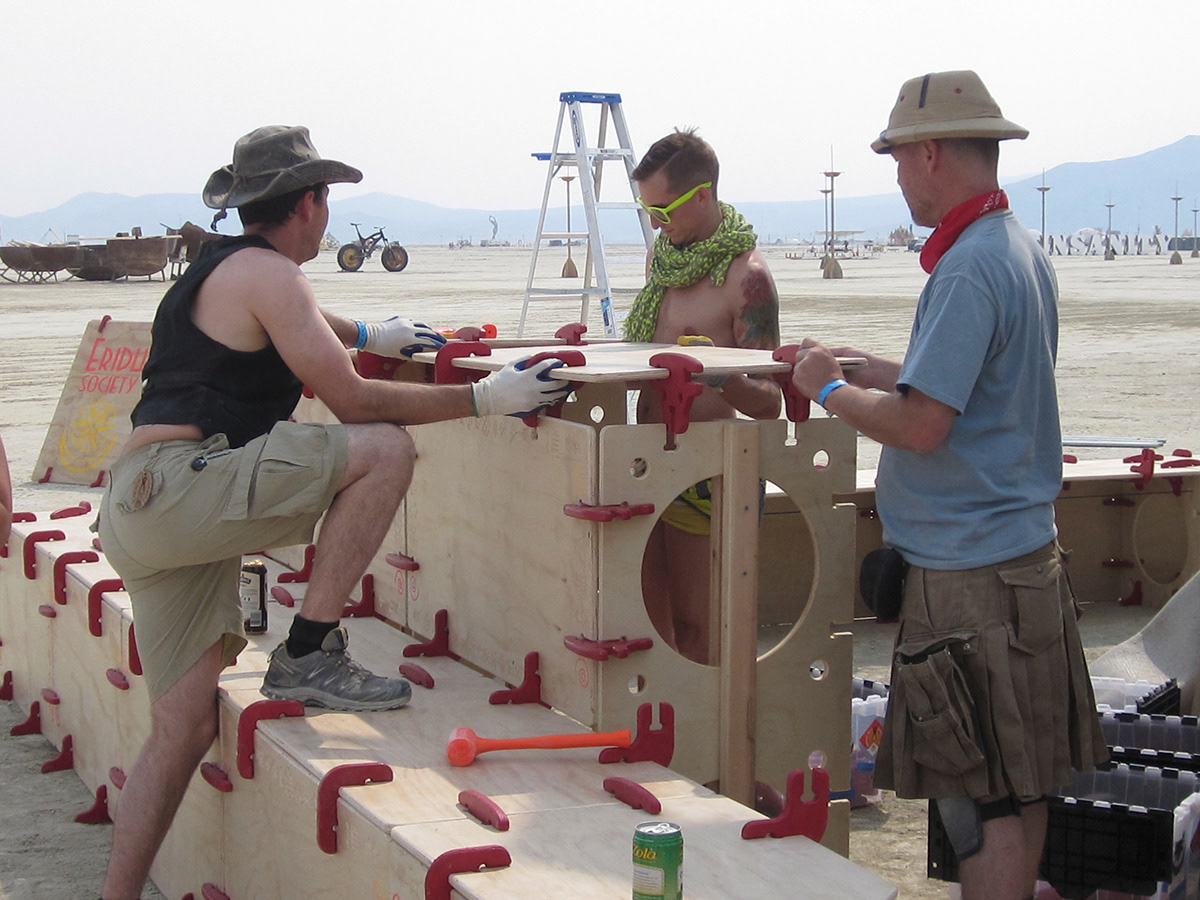
Once on site, all the parts came together slowly and surely.
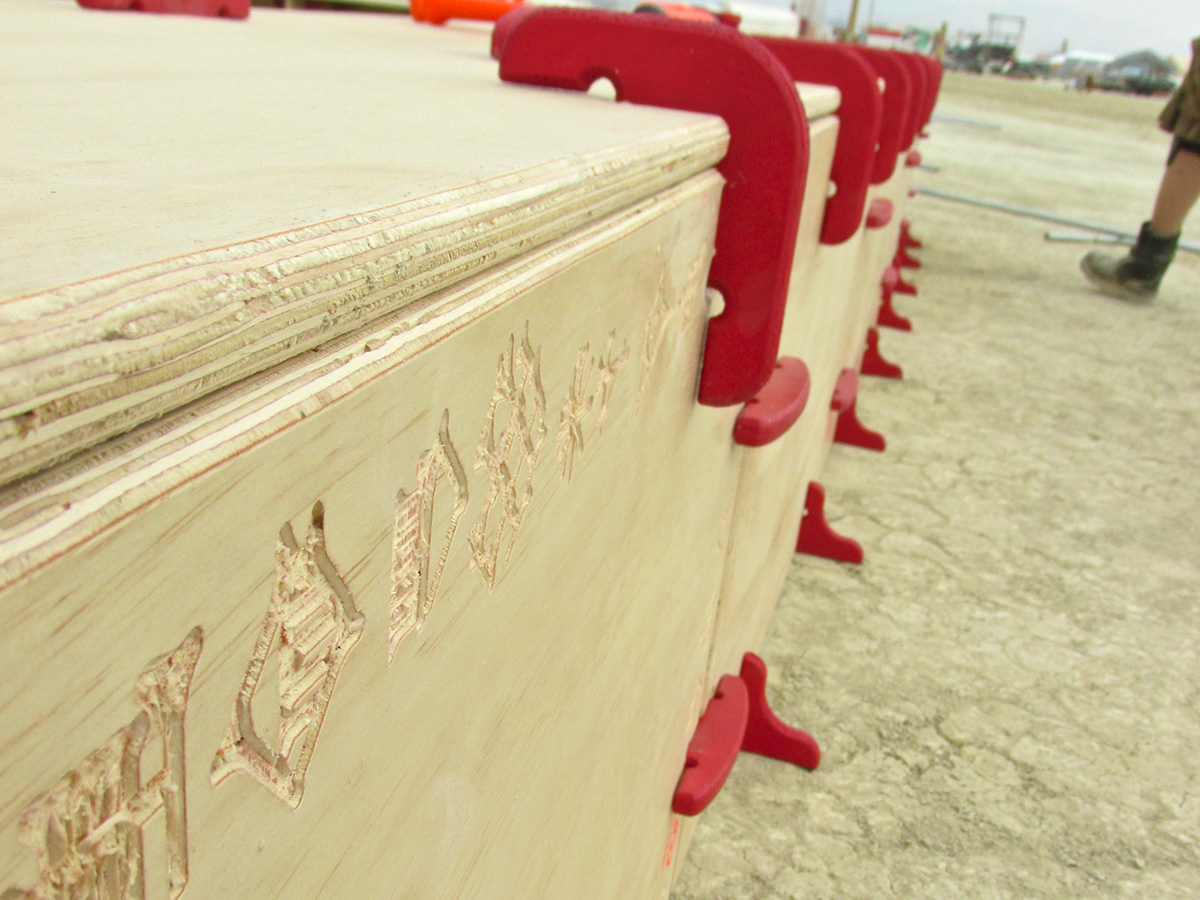
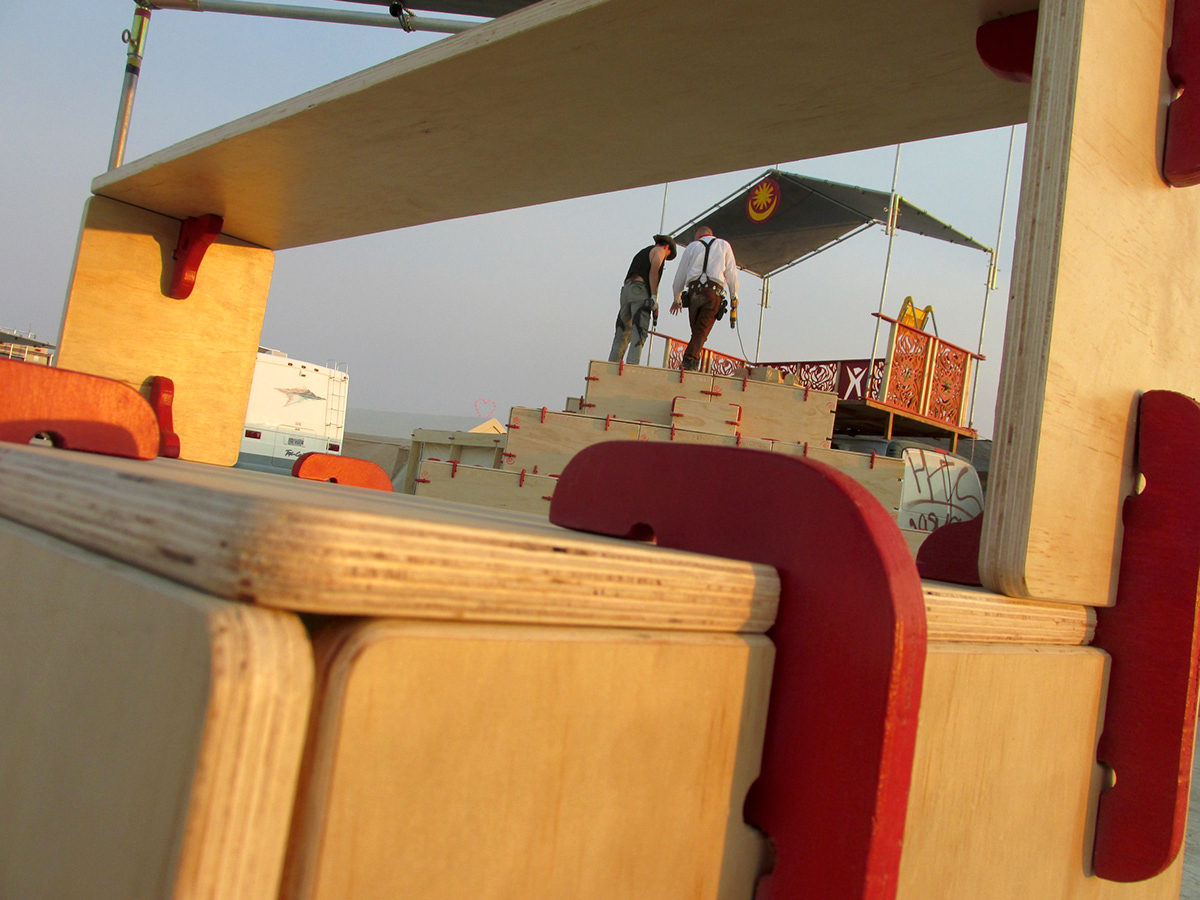
Very nearly done, only the bridge (connecting the ziggurat to the van's steel roof rack) and altar remained.
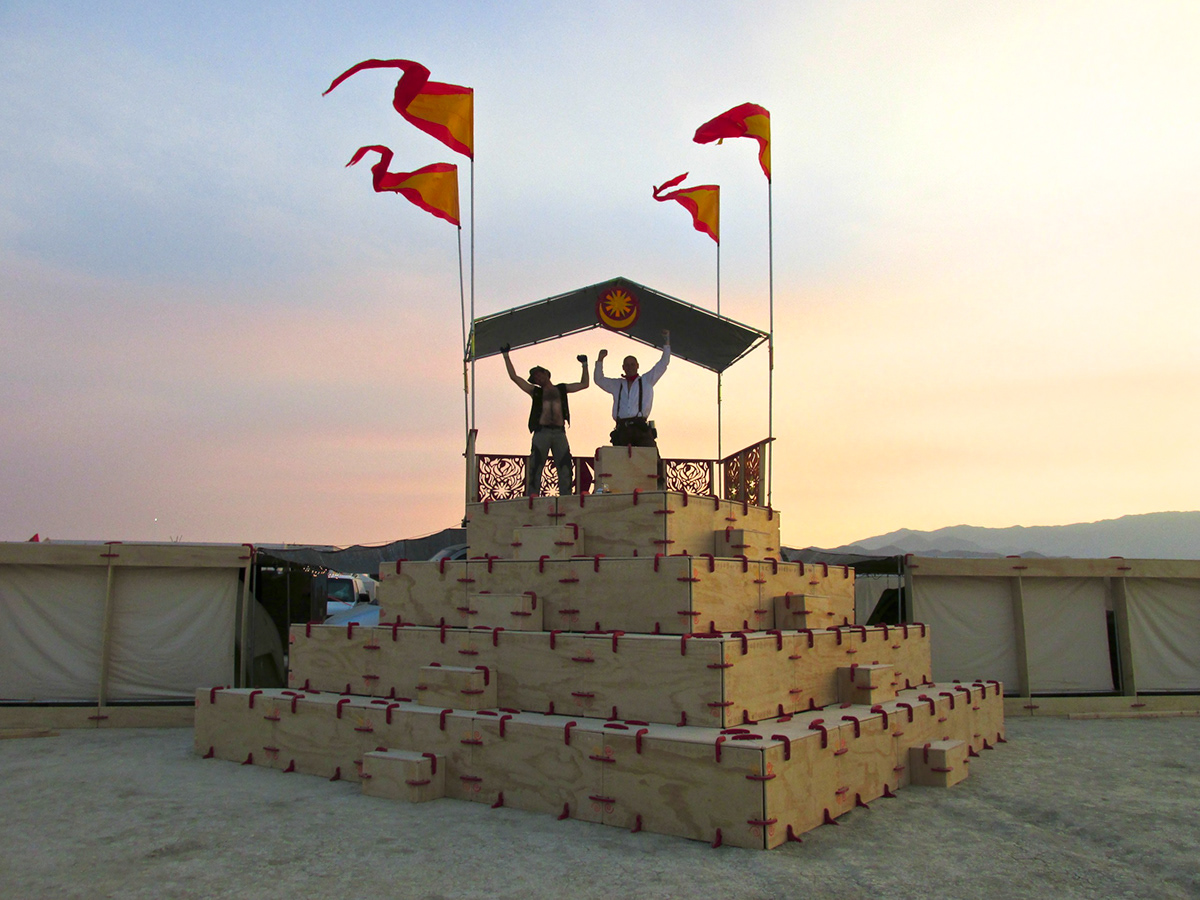

Completed ziggurat with wall displays and amazing art installations in each, courtesy artist Matt Evans. The pieces showcased artifacts, treasures, and curiosities collected on our adventures through time, space, and several of the better dimensions.
At night, the wall displays were lit using low-power LED rope lighting. The ziggurat itself was bathed in UV light using two LED bars that had been mounted onto the shade structures over the curio carts. This provided enough ultraviolet light to make the color accents on the face panels stand out, as well as provide additional lighting and safety on the steps.
A closer shot of the wall displays at night, with more of Matt Evans' phenomenal artwork.
Even after a week of dust storms and extreme weather, the UV lights electrified the fluorescent paint on the panels and stairs.


By day the camp and curio carts were frequently mobbed. We periodically served up tributes in the form of pickles, lemonade, beer, and champagne. We also had an incredibly popular "rubber stamp bar" with a couple dozen custom rubber stamps and ink stampers.
Location: San Francisco, California & Black Rock City, Nevada
Year: 2013
Status: Completed
Year: 2013
Status: Completed





